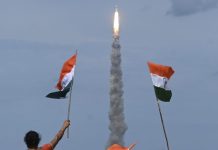The Sir Creek dispute between India and Pakistan seems to be reigniting. Earlier India-Pakistan conflict was mostly limited to Jammu and Kashmir, but as per the latest reports, the Pakistani army has rapidly started to build-up forces in the Sir Creek area and India is aggressively responding.
We Are Still Flying 44-Year-Old MiG-21’s; Nobody Even Drives Cars That Old: IAF Chief
As per reports, a second Sir Creek Battalion is ready for action. Its area of responsibility is from Hajmoro Creek up to Karango Creek near Karachi. There is already one at 31st Creeks Battalion, headquartered in Sujjawal. The 32nd will have Gharo as its headquarters.
The additional battalion is just the beginning, according to Times Now. Pakistan plans to deploy additional infantry and amphibious battalions and eventually arrive at a strength of three brigades.
For coastal surveillance, Pakistan is exploring additional offshore patrol vessels, six hovercraft and over 60 vessels of different sizes. Besides, of the 18 marine assault boats being imported, four are for the Creek area. This is besides the six new coastal defence boats that are being thought of, the sources added.
Air-defence capabilities are also being increased. New radar-controlled guns, short-range air defence weapons, better communication networks are all on the anvil. As for aircraft, there are already 4 Lockheed P-3 Orion aircraft and 2 ATRs in nearby Mehran and Karachi.
Why India or Vietnam Can Never Replace China As The World’s Manufacturing Hub?
Sir Creek Dispute Between India and Pakistan
The Sir Creek dispute between India and Pakistan is now turning out be more than just an unresolved border. The 96-km estuary between India and Pakistan, intersecting where Indian Gujarat State and Pakistani Sindh province meet, has had a dramatic impact on Indian security.
With both India and Pakistan unable to agree on the exact boundary, the differences flow into the Arabian Sea creating an enormous stretch of disputed water. Pakistan claims the entire Sir Creek based on a 1914 agreement signed between the government of Sindh and rulers of Kutch. India on the contrary claims that the boundary lies mid-channel, as was depicted in a map in 1925 and implemented with pillars placed to mark the boundary.
Over the years, the creek has also changed its course dramatically. If one country agrees to the other’s traditional position, then the former will end up losing a vast amount of Exclusive Economic Zone (EEZ) rich with gas and mineral deposits.
A country has special rights to EEZ under the United Nations Convention on the Law of the Sea that includes exploration and use of resources there including via deep-sea mining, in which there have been exciting new breakthroughs.




